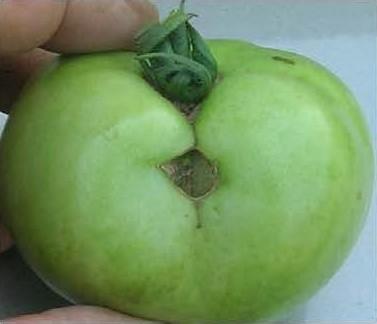Tomato Ripening Problems and Cucumber Beetles


Several growers have complained that their second set of tomatoes is catfaced or are deformed and ripening poorly. Their first set of tomatoes looked good, but the second set is having problems in scattered areas throughout the field. The problem is most probably due to the cool (even cold) night temperatures we had about 40 days ago. Tomato fruit takes approximately 45 days from flower to harvest and does not ripen or pollinate properly when temperatures fall below 52°F for even a few hours. Back in the second and third weeks of May we had 10 nights of temperatures below 52°F in many areas on the peninsula. In Salisbury we set a record low one night of 39°F in late May. Day temperatures during much of this time were in the upper 80s or low 90s so the fluctuation between day and night temperatures was extreme during some 24 hour periods. Nothing can be done for these misshapen fruits as the damage was done either before the flowers appeared on the plant or as flowers were pollinating.
Where are all the cucumber beetles?
I have been amazed this year as I walk cantaloupe, watermelon and squash fields how few cucumber beetles there are. It may have something to do with the winter we had of unusually warm temperatures into January and then the very cold temperatures in February and March. The dry weather we been having this year also may have something to do with the low populations. If you also have seen few beetles hopefully you have cut back or cut-out your foliar sprays for its control. Plants are generally so big now that it would take many beetles per plant to infect the plant with bacterial wilt. Fruit should be watched to make sure beetles, if they do come in late, are not feeding on the rind. A low population this summer does not, unfortunately, translate into low populations for next year.